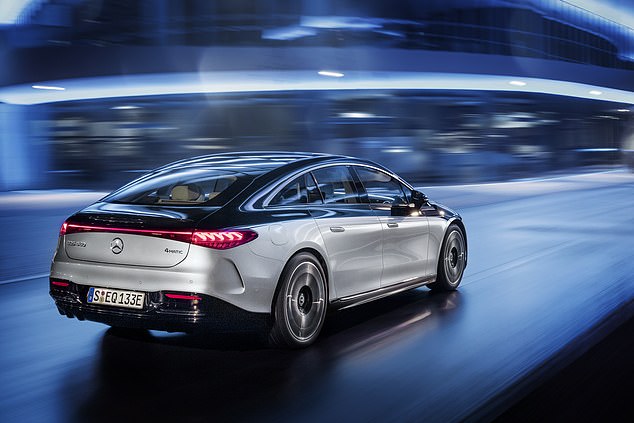The EV Depreciation Nightmare
New data reveals a significant value drop for luxury electric vehicles, raising concerns for owners.
The old adage rings true for most car owners: a new vehicle loses value the moment it leaves the dealership. However, many aren’t prepared for the rapid depreciation hitting electric vehicles (EVs). A recent analysis reveals that some luxury EVs are losing a substantial portion of their value within just a few years.

EVs are evolving rapidly, with each new model offering improvements in range, charging speeds, and technology. This means that older models quickly become outdated, reducing their resale value. Luxury EVs, such as the Mercedes-Benz EQS and EQB, and the BMW iX, all launched in 2022, have seen some of the most significant price drops.
“The used EV market has rapidly expanded in recent years, offering a wider variety of models at diverse price points for shoppers to choose from,” stated Kevin Roberts, director of economic and market intelligence at CarGurus.

“Looking broadly, the average list price of a used EV has dropped almost 5 percent over the past year and a staggering 47 percent from the peak in June 2022, when high gas prices drove demand for more fuel-efficient cars.”
Many high-end EVs from 2022 still boast impressive range, quick charging capabilities, and advanced technology, but their prices have plummeted. Vehicles that originally cost over $100,000 are now available for under $40,000 in some cases.
Factors Driving Down EV Values
Several factors contribute to the rapid depreciation of EVs. Luxury vehicles generally depreciate faster than standard vehicles, but the trend is even more pronounced in the EV market. Hertz, which invested heavily in EV fleets, was forced to sell off a significant portion of its electric cars after they lost a large amount of value.

For EV owners, these losses have served as an early warning. The consumer market is now beginning to see similar depreciation, with two-to-three-year lease deals on models from BMW and Mercedes-Benz being offered in the used car market.

For example, a 2022 Mercedes-Benz EQS 450+ with just over 1,000 miles driven was listed at $41,995. In 2022, the base model EQS had a starting price of $105,000. Another 2022 EQS with almost 39,000 miles sold for $32,695.
Depreciation Comparisons
Market analyses show a similar trend across the U.S. used car market. According to Robert’s analysis, the average Mercedes EV lost 18.4 percent of its value since 2024. Meanwhile, the brand’s gas cars lost 4.3 percent of their value. Audi EVs also lost more value (negative 2.6 percent) compared to their gas cars (negative 1.7 percent). The same goes for BMW EVs (negative 6.8 percent) and gas cars (negative 1.5 percent).
These electric sedans depreciate much faster than gasoline-powered luxury vehicles. The Mercedes-Benz E-Class loses approximately 40 percent of its value over five years, while an Audi A8 depreciates about 20 percent in its first year.
Broader Market Trends
The sharp drop in EV prices is influenced by several factors. Automakers have significantly invested in new factories and are replacing gas-powered lines with battery technology facilities. These investments increased the cost of new EVs initially, and early adopters shouldered some of that expense.
As manufacturers scale production and enhance battery efficiency, new EVs are entering the market with improved features at reduced prices. “Recent price adjustments and incentives in the new EV market have also trickled down to used EV values,” Roberts added. “By comparison, the internal combustion engine (ICE) segment has typically been more stable since this market is much more established as far as supply and pricing.”
With production stabilized, prices are finally coming down to more realistic levels. New EV prices fell by 1.2 percent in February compared to January.



